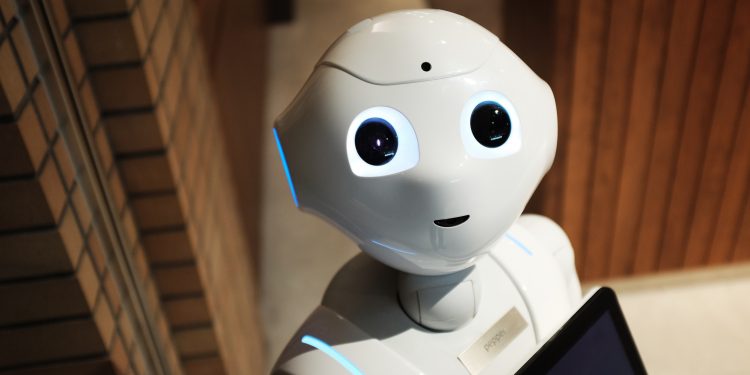Why the #FutureofWork conversation needs to be about the present
We are paralyzed by the #FutureOfWork but we don’t need to be.
Let me be clear: I’m a believer. Work is changing. From 2014–2015 I started a company in Australia using only freelance labour drawn from over a half-dozen countries. The process was easy and relatively cheap. I co-founded a similar company in Canada in 2006, and that approach would have been impossible back then.
I’m now a partner at Social Capital Partners, and we’ve been researching the changing nature of work for the past year. SCP has a long history of trying to help people facing barriers to employment find meaningful work, so the topic is very important to us. Our research has convinced us that not only is work changing, but in many ways, and for many people, it has already changed. And these changes are causing major problems for a lot of today’s workers.
So, as a believer in the urgency of this issue, the #FutureOfWork hype train scares the hell out of me. The more reports and articles that are written, the more Future Of Work Institutes that are formed, the more paralyzed we seem to be to action.
And, my goodness! The reports! In the last year or so almost every global consulting company, many major philanthropic institutions, governments, the World Economic Forum — everyone has a report on this topic. With significant effort they estimate the number of jobs that will be gained or lost due to automation and think through how the rise of the gig economy will make even the idea of jobs outdated. With much less effort, they tend to propose a vague set of recommendations.
No matter how well meaning, the problem with these reports is how they’re reflected in the media, and therefore how the subject is understood by the 99% of people who will never read them.

The robots are coming! Just stay very still and they might leave!
A few examples:
BBC: “Robot automation will ‘take 800 million jobs by 2030’ — report” (based on McKinsey’s November, 2017 report)
CNN: “Robot scabs are coming to take your jobs” (based on several reports, 2018)
CNBC: “Half of American Jobs are at risk from automation, new study suggests” (based on Ball State’s July, 2017 report)
Perth Weekly: “AI-powered robots now eligible to run for political office in Australia” (Australian Senate Report, 2018)
OK, I made the last one up. But it’s not out of step with the general hyperbole on this topic. That McKinsey report reflected in the first headline above, like most of these reports, is far more nuanced than the prediction of 800 million jobs lost to automation. In fact, one of the lead writers was quoted later as saying “there will be enough jobs for all of us in most scenarios.”
But that makes for a boring headline.
All of this creates great fear, as per this recent article in Slate and this headline from the New York Times: “Most Americans See Artificial Intelligence as a Threat to Jobs.” And why shouldn’t they? They hear about it every day.
So, why is this a problem?
If work is really changing, shouldn’t these dramatic headlines spur people to action and drive real change? From what I see, it’s doing the opposite.
The issue is two-fold. First, the conversation about work and jobs has been taken over by complex concepts like artificial intelligence, robots and globalization. Very few people actually understand these topics, and nobody can predict their effect with any degree of certainty. The reports have conflicting conclusions despite all having credible approaches. The sense that things are changing incredibly quickly is making matters worse. How many times a day do you hear about the ever-increasing pace of change? All this creates a sense of powerlessness; how do you solve something that is currently happening at an ever-increasing rate and with an unpredictable outcome?
Second, the #FutureOfWork label includes the word future, which is very misleading. Many predicted effects have already started happening, and in some cases have been happening for decades. But the future label makes it seem like it hasn’t happened yet, and that we still have time to figure this out. It has led to a “pilot project” focused government response that funds a bunch of small initiatives hoping a few will turn into something big, just in time to solve these “future” problems.
The combined effect of overwhelming complexity and the “future” label is policy paralysis and pilot-project-itis.
I referred earlier to the sense of urgency I felt about this topic, which leads me to great frustration every time a new report is released or a new pilot project is announced. It’s my view that, while some issues here are incredibly complex, some are much more understandable, and there are some real things that can be done.
What is actually happening to work?
The complex #FutureOfWork topics are reinforcing two major long term trends:
- Permanent, full-time jobs are in decline, and that decline is accelerating. They are being replaced by part-time jobs, self-employment and “contract” positions.
- The skills needed to do work are continuing to change, and it’s likely that this will also accelerate as companies incorporate more automation.
#FutureOfWork can largely be boiled down to some version of these two issues, and both of them have been around for a while.
Why is this important right now?
On the first topic, the decline of permanent full-time jobs has already created a form of two-tiered citizenship. 30% of our workforce is currently in something other than a permanent full-time job. For them, it’s much harder to pay taxes, rent an apartment, access employment insurance, save for retirement, get any type of debt or take time off for sickness or vacation. (If you want to experience this, try renting an apartment in a major urban centre without an letter from your employer). And that’s just a sample of the differences between our two categories of workers.
We effectively have one social safety net for permanent full-time employees: robust and comprehensive; and one for everyone else: complex and full of holes. It’s creating a tremendous amount of stress and is objectively unfair. Don’t think about this as just a problem for Uber drivers and digital marketers; many professionals are contract employees today: from nurses to paralegals to associate professors. All of them are jobs that your guidance counselor in high school would have strongly recommended as safe and secure. Reforming our social safety net is an urgent issue for today, and not for the future.
On the second topic, shifting skills and rising automation create two main problems that we’ve never been very good at dealing with: helping workers displaced by automation find new work and supporting workers with opportunities to increase their skill so they can either stay in a job or shift to more stable employment. The story of a group of workers struggling to get by after a downsizing or factory closure is not a new one. This, despite the fact that we spend billions of dollars on government funded employment and training programs.
The above topics are hard to solve, but also reasonably easy to understand. There’s no need to wait to see how the future plays out in order to start solving them. The changes that are coming are only going to reinforce these very same topics — whatever we do to fix today’s problems will also be helpful in preparing for the future.
But these aren’t the conversations we’re having. We’re too busy worrying about the robots¹.
It’s important to understand that the fear and confusion that’s driving inaction extends well beyond the government — it infects private sector and non-government organizations as well. As an example, I was recently talking to someone who works at a sustainable real estate developer in the US. They design mixed-use developments in consultation with local community residents and train some of them as construction workers for their projects. In other words, they are great. Classic economic development, and exactly what you’d want every developer to be. When I told her we’d been doing a lot of research on the future of work, she got really interested.
“We’re really worried about the future of work,” she said. I asked her why.
“Well, our projects take 10 to 15 years to build. We want to train people in construction, but now we’re worried that in 5 years robots are going to be doing all the building. What if we train people for jobs that won’t exist?”
She was seriously considering stopping their training program because she was worried about helping people into dead-end jobs. That, my friends, is the paralysis caused by #FutureOfWork. It’s the danger of the false precision in the predictions of our smartest consulting firms and global agencies. It’s why estimating global job losses over multiple decades based on models built on a computer spreadsheet, when you know how the media will portray it and you know it could easily be wrong, borders on irresponsibility.
Of course, you keep training people. Even if we knew the robots were coming to build our apartments buildings in five years (which we definitely don’t), there is great value in the training and the work until then.
So, to end, a few suggestions:
First: if you’re working on a report right now, abandon your spreadsheet. We don’t need another prediction of the future². Focus on a real, well-thought out solution to a specific current problem that can be implemented. You’re probably very smart, the issues are real and your work could be helpful. Second, for governments, enough with the pilot projects. It’s a stalling tactic. We know most of what we need to know. Take risks, make policy decisions and start real programs, working across jurisdictions.
At SCP, we’re trying to help by scanning the world for great innovations, both public and private sector, that are tackling these issues right now. There are some really interesting things happening in pockets³ that might work in other places. We’re going to try to write about as many as we can to help move the “what do we do about this?” conversation from the theoretical to the practical. We’d welcome any and all help in our effort to do this.
Ensuring our workforce can adjust, now and in the future, to the changing nature of work is today’s great public challenge. To tackle it, we need to ignore the hype and bring the same commitment and ambition as we did to building a railroad through the mountains or to creating our current social safety net. For so many people, their “present” depends on it.
¹ Yes, I saw the video of the headless robot dog. Did it scare me? You’re damned right it did. That thing is terrifying. See what happens? (Forget about the robots…forget about the robots…forget about the robots…)
² I’m serious about this. Unless “new” analysis will yield important information that helps solve problems that isn’t already contained in one of these reports (Deloitte, PWC, International Labour Organization, UK Government, Ericsson (really, Ericsson?), McKinsey, McKinsey, McKinsey, World Economic Forum, Bain, RBC, and there are dozens more), please think hard about why you’re doing it.
³ A few great examples are Singapore’s SkillsFuture program for lifelong learning, Seoul’s Sharing Cities plan that (among other things) increases accessible workspaces for freelancers, Estonia’s digital government which makes administration easy for non-standard workers, Lenddo (Philippines) and Traity (Spain), private companies which help analyze credit risk without the need for a standard employment history and Fair Care Labs in the US which is trying to create a safety net for domestic workers.
This article was first published on Medium.
Jon is the Managing Director at Social Capital Partners and also an entrepreneur, hopeful capitalist and aspiring social justice activist.






No Comment